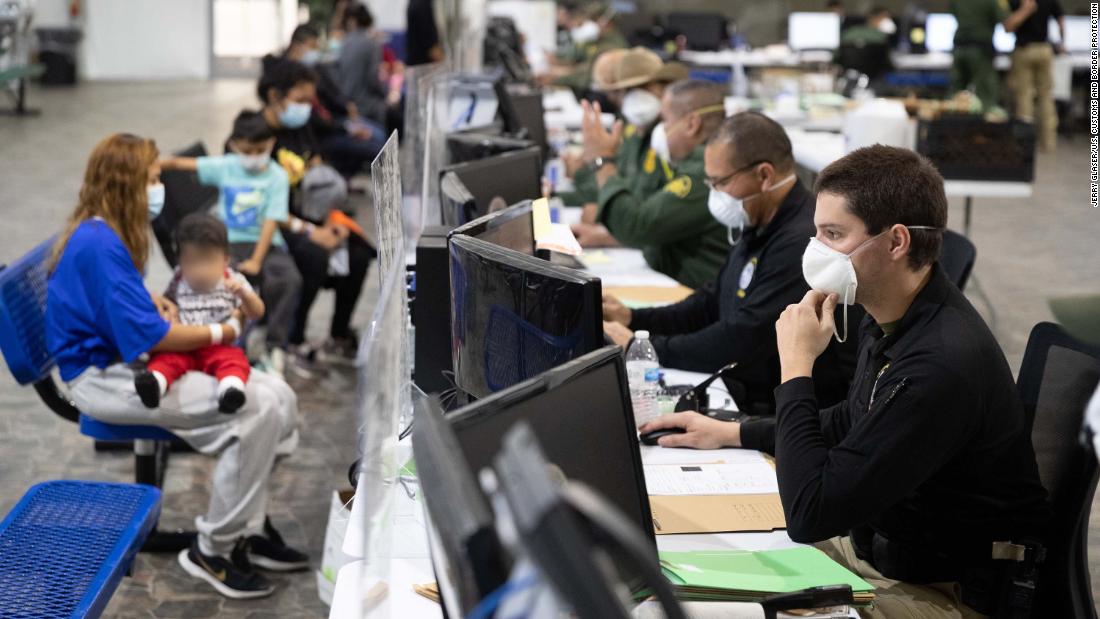
The Biden administration expelled more than half of the migrants arriving at the US-Mexico border in recent weeks under a Trump-era health order that has been continued by the Biden administration, according to preliminary data reviewed by CNN.
Of the some 103,000 migrants encountered by Customs and Border Protection in the three weeks through March 17, more than 61,000 were expelled under the health authority known as “Title 42.” Around 41,800 were allowed to remain in the US.
President Joe Biden said Thursday that “the vast majority, the overwhelming majority of people coming to the border and crossing are being sent back” during his first presidential news conference.
He spent much of the press conference facing questions about the crisis on the southern border, promising that conditions for unaccompanied minors arriving in the US will improve and blaming the prior administration and cooler weather for the spike of migrants at the border.
He went on to say the US is sending back the “vast majority of the families that are coming.”
But the majority of migrant families detained by US Border Patrol during those three weeks remained in the US, the data shows.
In the three weeks ending March 17, there were more than 21,000 family members apprehended by Border Patrol at the southwest border who were processed into the US, according to data. During the same period, around 7,600 family members were expelled.
The Department of Homeland Security continues to expel “noncitizen single adults and many family units” pursuant to the US Centers for Disease Control and Prevention public health order, an administration official said Thursday.
In some situations, when expulsion is not possible due to Mexico’s inability to receive them, families are put into deportation proceedings, the official added.
“This administration draws the line when it comes to children. We don’t expel young children back into violence or further trauma,” the official said.
Mexico began to implement a law last year that limited the US government’s ability to return some families to that country, particularly in the Mexican state of Tamaulipas, south of the Rio Grande Valley of Texas, which is ground zero for border crossings.
“That’s why we’re seeing higher numbers” in the region, the official said. “It’s also why we have been releasing some individuals with a slightly different form from an NTA, a notice to appear.”
Some migrants released into US without ‘notice to appear’
In order to move migrants faster out of overwhelmed facilities, Customs and Border Protection has begun releasing people in the Rio Grande Valley, Texas, region without a “notice to appear,” a document that instructs them to appear before an immigration judge on a certain date, sources told CNN and NBC first reported. The move could make it more difficult for authorities to track migrants entering the country and could spark confusion among those looking to have their asylum cases adjudicated.
The release of some migrants without notices to appear started over the weekend, and its use has fluctuated since then, a Department of Homeland Security official said, pointing out that the agency would prefer to provide migrants with the notices.
The new practice, which puts the onus on migrants to initiate their own immigration processes, had been done on a case-by-case basis in the past but is now being used more widely to speed up processing and get people out of government custody more quickly, according to another DHS official.
A US Border Patrol source said the practice applies only to families released from custody in the Rio Grande Valley region but is “subject to extend to other sectors” depending on the need.
Rodolfo Karisch, who served as the chief patrol agent in the Rio Grande Valley during the 2019 border crisis, said migrants were not released without executing notices to appear at the time.
The lack of notices is “compounding the problem,” he said, making it more difficult for immigration authorities to keep track of the “next generation” of undocumented immigrants.
“The oversaturation is so great that in order to move people fast enough, that is what we have had to resort to,” the first DHS official said. “Resources are stretched so thin.”
CNN’s Maegan Vazquez and Priscilla Alvarez contributed to this story.



